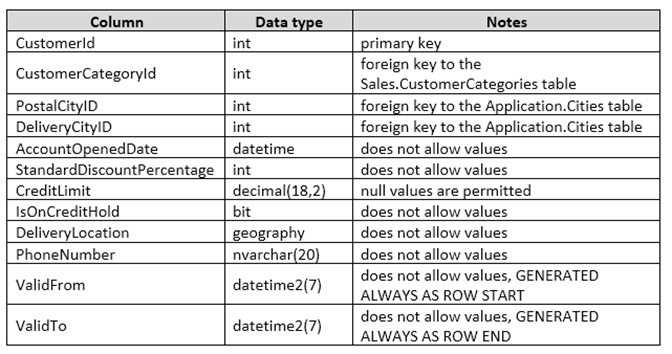

Note: This question is part of a series of questions that use the same scenario. For your convenience, the scenario is repeated in each question. Each question presents a different goal and answer choices, but the text of the scenario is exactly the same in each question on this series.
You have a database that tracks orders and deliveries for customers in North America. System versioning is enabled for all tables. The database contains the
Sales.Customers, Application.Cities, and Sales.CustomerCategories tables.
Details for the Sales.Customers table are shown in the following table:
Details for the Application.Cities table are shown in the following table:
Details for the Sales.CustomerCategories table are shown in the following table:
You discover an application bug that impacts customer data for records created on or after January 1, 2014. In order to fix the data impacted by the bug, application programmers require a report that contains customer data as it existed on December 31, 2013.
You need to provide the query for the report.
Which Transact-SQL statement should you use?
A.
B.
C.
D.
E.
safiullah
Highly Voted 5 years, 9 months agoM4x
5 years, 9 months agoBacky
5 years agoTazul
Highly Voted 5 years, 9 months agoBillybob0604
Most Recent 4 years, 5 months agoVermonster
4 years, 5 months agoVermonster
4 years, 5 months agoBabyBee
4 years, 6 months agotcroots19
5 years, 3 months agoBacky
5 years agoChaosRedeemed
5 years, 7 months agoimran
5 years, 8 months ago